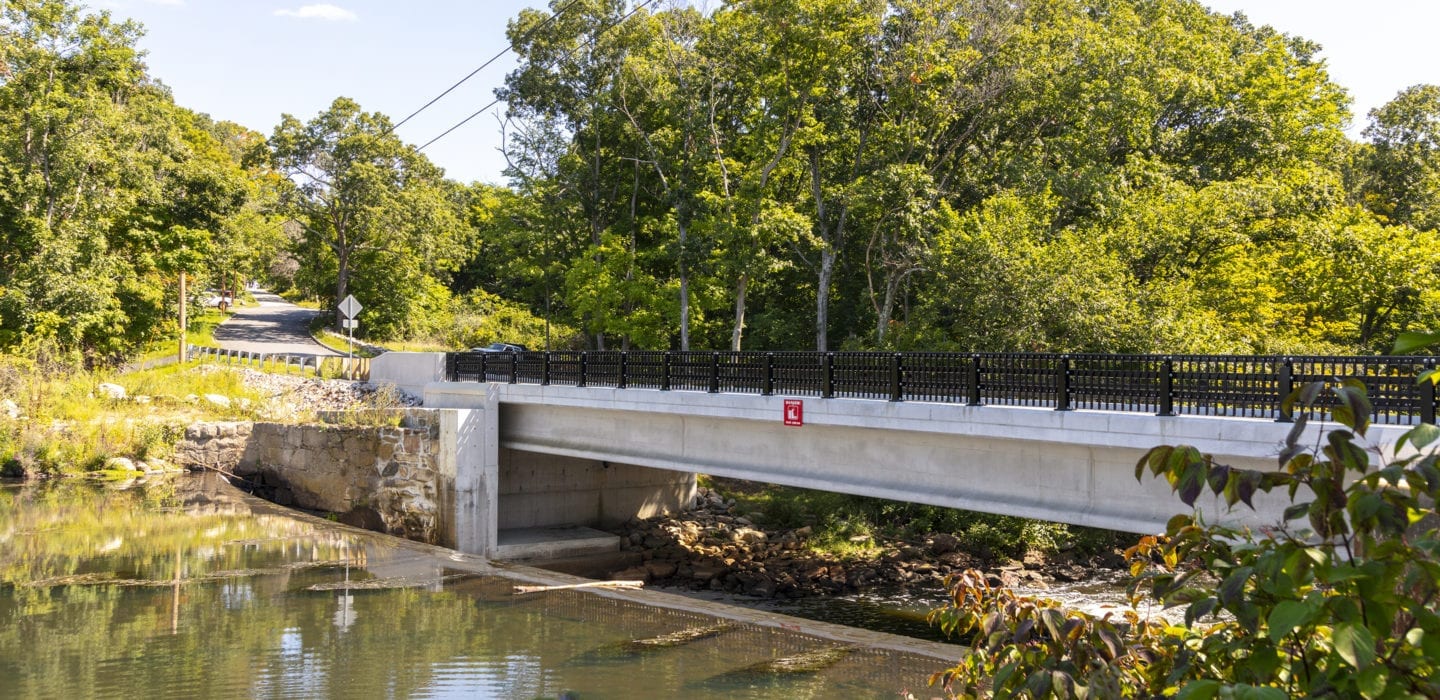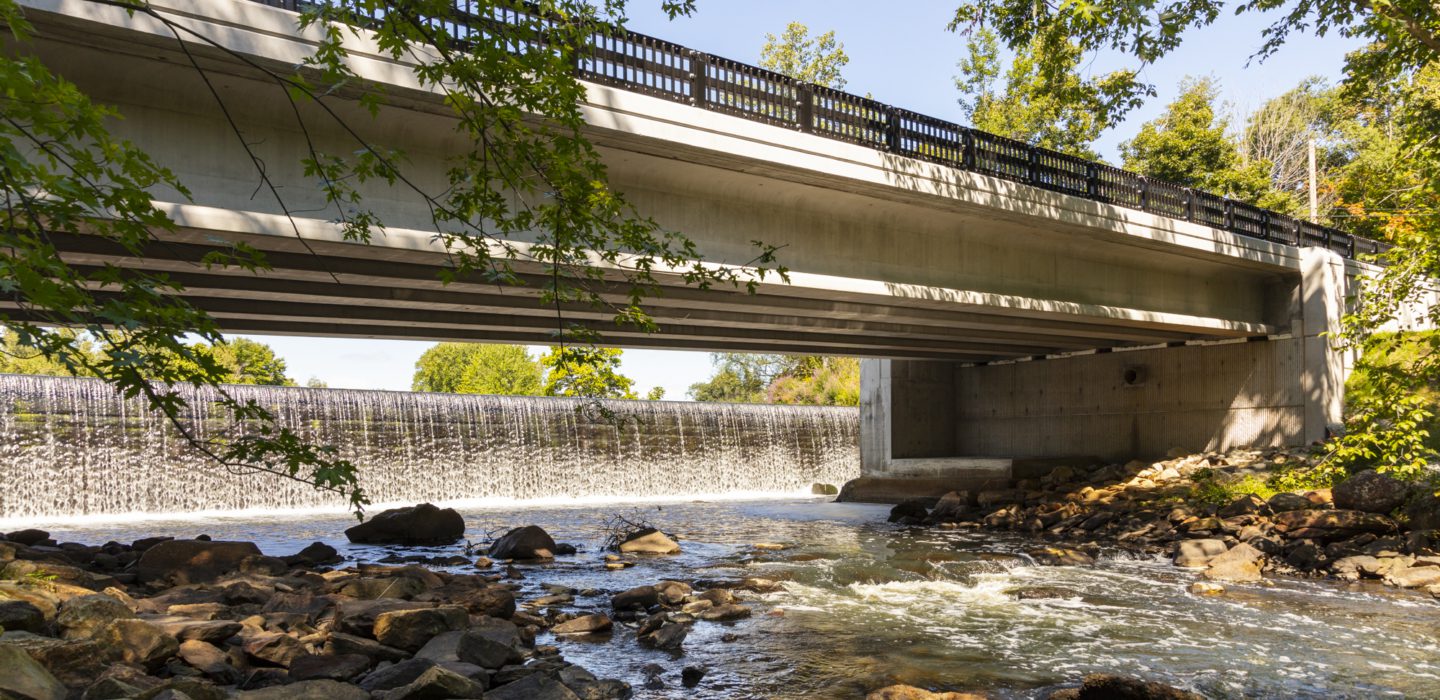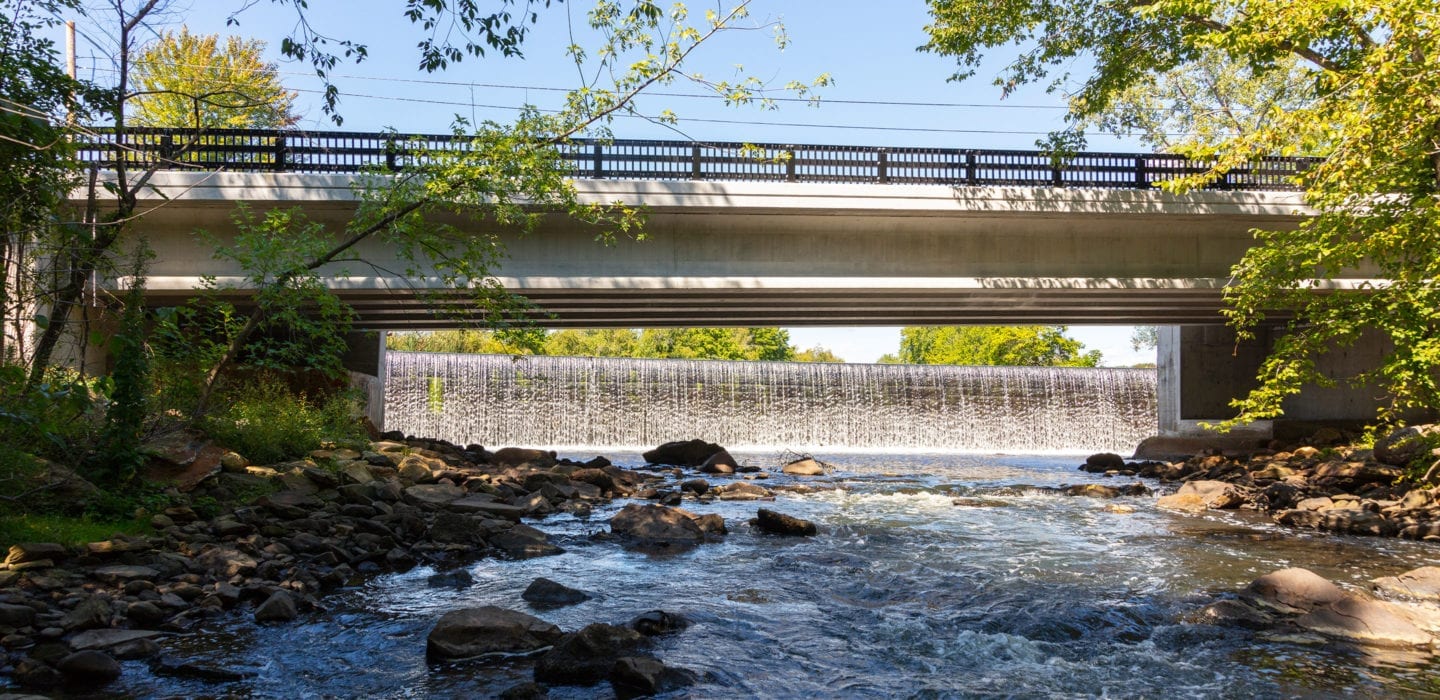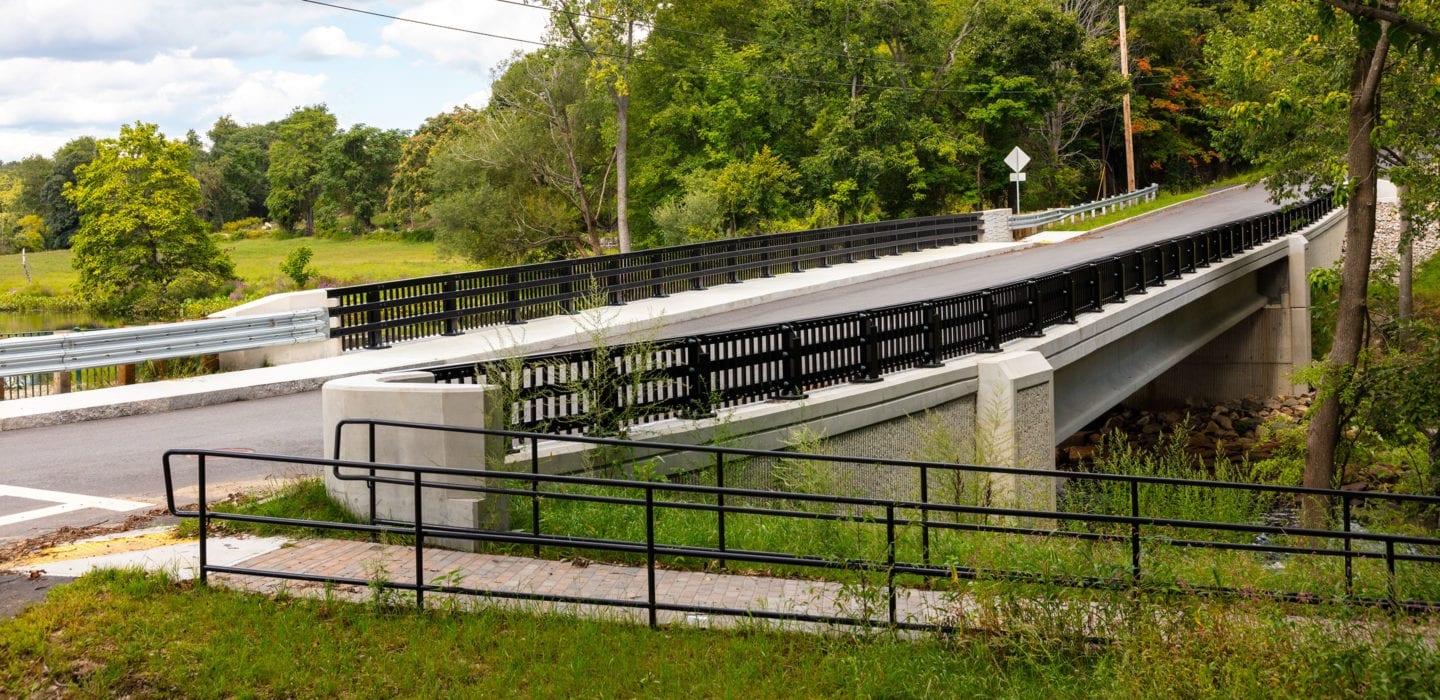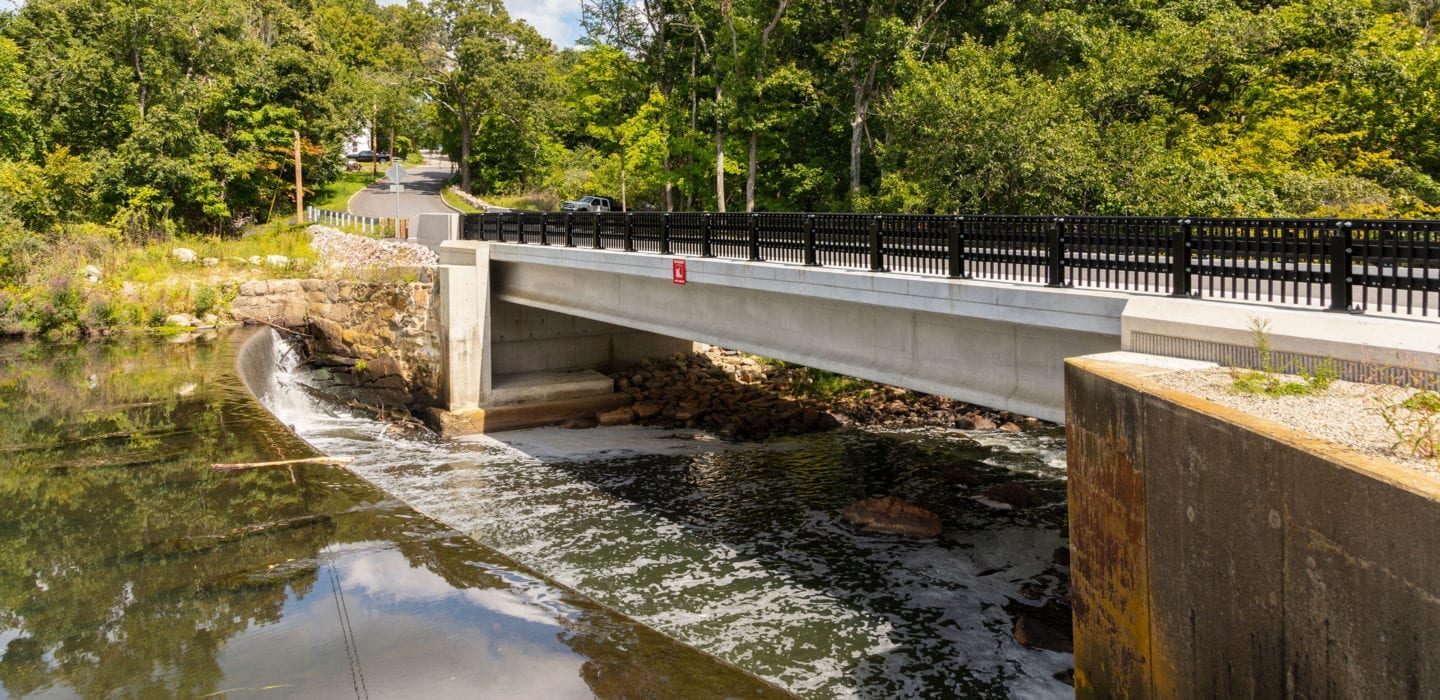Blackstone River Bridge Replacement
Sutton, Massachusetts
The Blackstone Street Bridge has been replaced several times throughout its long history. Originally consisting of a timber bridge, it was replaced in the 1930s with a two-span structure comprised of concrete T-beams with stone-faced concrete abutments. After the hurricane of 1955, the south abutment was replaced with a concrete gravity abutment. Having outlasted its service life, the bridge is once again being replaced with a longer and wider structure meeting today’s current standards.
The bridge is located immediately downstream of the Pleasant Falls Mill Pond Dam, within an area rich in historic and important cultural resources, adjacent to the Town’s Tri-Centennial Park, and within a stretch of river popular for outdoor reaction. All of these factors were considered in the design and layout of the new bridge. This included protecting the historic Blackstone Canal and Tow Path as well as one of the original foundation stones from the old timber bridge. Modifications to the roadway profile also required the reconstruction of an MAAB complaint portage pathway used by canoeists to bypass the dam. The project also provided stormwater collection and treatment improvements along the roadway.
The new bridge consists of a 113-foot single-span structure comprised of precast, prestressed New England Bulb Tee Bulbs, which were selected due to the site’s environment and proximity to the dam. The roadway was widened to provide a 26 ft wide roadway and a sidewalk. The new bridge abutments were founded on bedrock located behind the existing abutments which greatly assisted with the control of water during construction. In addition, the existing center pier was removed thereby improving the hydraulic characteristics and capacity of the river downstream of the dam. In addition, as the only detour route included a weight-posted bridge on Depot Street, repairs were made to the Depot Street bridge deck before closing Blackstone Street, with the condition of the deck monitored throughout construction. The project also included a pre- and post-inspection of the adjacent stone dam as well as vibration and deformation monitoring during heavy construction operations.

